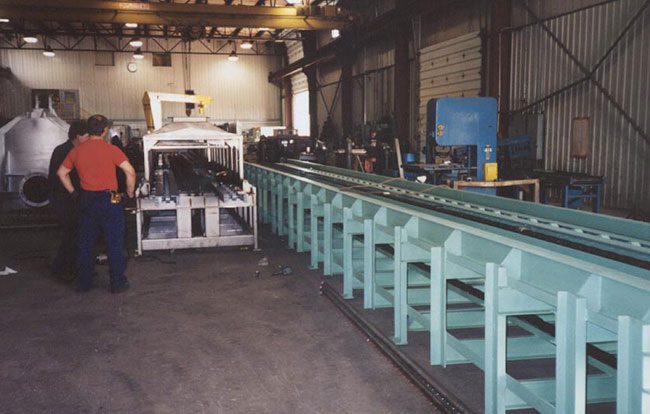Sheet Metal Fabrication: 101
 The world of metal fabrication is often a foreign one to those who work outside of the industry. Terminology, processes, and project requirements are usually unfamiliar territory for those who don’t work in the industry day-to-day. Many people simply don’t have a basic understanding about each step of the sheet metal fabrication process. Without this foundational knowledge, it can be difficult to have realistic expectations about what to look for when hiring a metal fabricator for a project.
The world of metal fabrication is often a foreign one to those who work outside of the industry. Terminology, processes, and project requirements are usually unfamiliar territory for those who don’t work in the industry day-to-day. Many people simply don’t have a basic understanding about each step of the sheet metal fabrication process. Without this foundational knowledge, it can be difficult to have realistic expectations about what to look for when hiring a metal fabricator for a project.
When the need arises to hire a metal fabricator to create a new product, or products, for a commercial or industrial project, the work involved is a multi-step process that requires numerous tools and a number of skilled experts all working together toward job completion. Start to finish, a sheet metal fabrication job involves:
- Working with blueprints- An engineer first creates the blueprints, which will then be used to determine the sheet metal product specifications necessary for rough drawings to be made.
- Creating a final shop drawing- All rough drawings and calculations will be checked and rechecked to ensure that the end product meets all necessary specifications and requirements. Then the final shop drawings will be made and will include in-depth calculations of sheet metal stress levels and load limitations. This information will be used to determine the steps of the fabrication process.
- The metal fabrication process- Explained in further detail below, the metal fabrication process involves cutting, bending and forming, joining, and finishing.
- Product finishing- After fabrication is complete, a product is still not suitable for commercial use until it has undergone finishing.
Each of these steps must be fully completed before the next step can begin. Rushing through the process can compromise the integrity of the work and produce a lower quality product.
Now that you’ve got a general overview of the entire process from beginning to end, we wanted to break down the steps of the metal fabrication process in greater detail. Fabrication itself involves multiple stages and tools, each working to transform the sheet metal from a plate or sheet into a workable product.
A Brief Overview of Sheet Metal Fabrication
Stage 1: Cutting
As the name suggests the metal that is being fabricated is in the form of a rectangular sheet or plate, depending on its thickness. So, the first step of fabrication is to cut the sheet appropriately. This can be accomplished by two primary methods:
Cutting with Shear– Using shear forces to cut the metal through three different operations. The three methods are Shearing, Punching, and Blanking. Each of these operations serves a different, and necessary, purpose in the cutting process.
Cutting without Shear- This process is needed specifically for industrial metal fabrication projects. It allows for optimum precision cutting and faster processing times. There are three methods of cutting without shear. They include: Laser Beam Cutting, Plasma Cutting, and Waterjet Cutting. Each of these three methods has specific pros and cons associated with their use, but ultimately work best to produce precision cuts for large-scale industrial projects.
Stage 2: Bending and Forming
There are numerous tools and machines that can be used for bending for forming sheet metal. Press brakes, rolling machines, and other tools are used to accomplish U-bends, V-bends, and other custom forms specified in a projects drawings and plans. Whether these bends are created through stamping, folding, or machining, this is the stage where that main transformation happens.
Stage 3: Joining
Once the sheet metal is bent or formed into the required shape for the project, the ends must be joined together. Or, in many projects, the completed piece is constructed of multiple metal sheets. In either case, the metal must be fused together by welding, brazing, riveting, and adhesives. It’s important that these welders are highly skilled and properly trained to perform this stage with precision.
Stage 4: Finishing
The final stage of the sheet metal fabrication process is finishing. Once the metal is cut, bent and formed appropriately, and joined together, a surface finish must be added to the final product. Finishing includes powder and paint coatings, silk screening, adding possible sealants or other layers of protection. Other finishing treatments can be added to improve or increase the specific properties of the sheet metal, such as conductivity or resistance.
To learn more about the metal fabrication process, or how or highly skilled tradesmen at Swanton Welding can use our expertise and tools to create exceptional metalwork for your next project give us a call at 419-826-4816 today.

